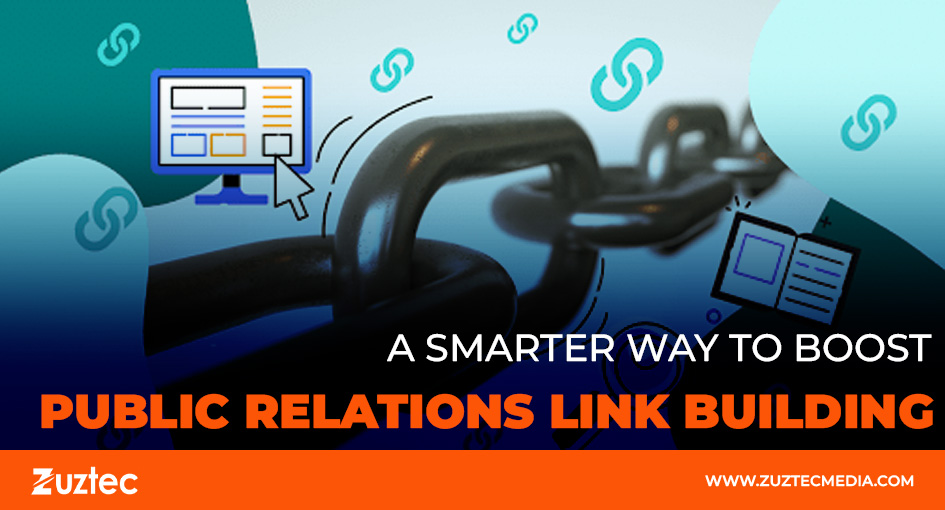
A Smarter Way to Boost Public Relations Link Building
In today’s digital landscape, building strong backlinks is a crucial factor for improving a website’s SEO and gaining more visibility online. However, traditional link-building strategies—like posting on forums or trading links—have lost their effectiveness over time. Modern businesses now look for smarter, more organic methods to earn links. One highly effective approach is public relations link building.
Public relations (PR) focuses on promoting a brand’s image through earned media coverage, rather than through paid ads or self-promotion. Media mentions, interviews, expert quotes, and published stories can generate natural, high-quality backlinks from authoritative websites. These links are extremely valuable because they boost a website’s credibility and help it rank higher in search engine results.
Public relations link-building does not rely on spammy tactics or low-quality directories. Instead, it focuses on building genuine relationships with journalists, bloggers, and influencers. It’s about offering real value—whether through a compelling story, insightful commentary, or breaking industry news.
In this article, we’ll break down the concept of public relations link-building, why it’s more effective than traditional methods, and how businesses can create successful PR-driven campaigns. Mastering this technique can help brands achieve stronger SEO results and build long-term online authority.
Why Public Relations Link Building Is More Effective Today
Public relations link-building has become the preferred method for serious marketers because it earns links naturally. Unlike outdated tactics that focus purely on quantity, PR-driven links prioritize quality, authority, and relevance. Search engines like Google now reward websites that earn backlinks from trustworthy sources, making PR link building not just effective but necessary.
When your brand gets featured in a news outlet, a major blog, or an industry magazine, you benefit from more than just a link. You gain visibility, credibility, and audience trust. Readers often view media coverage as an endorsement, giving your brand instant authority. Over time, these earned media placements can position your business as a leader in your industry.
Another advantage of public relations link-building is that it targets both audiences and search engines. A story that captures media attention also tends to attract natural links from other websites, blogs, and social media platforms. This creates a ripple effect that boosts your SEO while increasing direct traffic and brand recognition.
Additionally, PR-based link building fits seamlessly into broader marketing strategies. It supports brand storytelling, reputation management, content marketing, and even sales efforts. Rather than being a separate activity, it becomes a natural part of promoting your business.
By focusing on authentic relationships with media professionals and offering real value to their audiences, businesses can secure meaningful backlinks that withstand algorithm updates and support long-term growth. In today’s competitive digital world, public relations link-building is a smarter, more sustainable path to online success.
How To Implement A Successful Public Relations Link-Building Strategy
Building a strong public relations link building strategy requires planning, creativity, and consistency. It all starts with identifying the newsworthy elements of your brand. Journalists and bloggers are looking for stories that are interesting, timely, and relevant to their readers. Focus on things like new product launches, unique research findings, expert insights, company milestones, or meaningful collaborations.
You can also leverage platforms like Help a Reporter Out (HARO), where journalists seek expert sources for their articles. Responding to media queries with valuable insights can quickly earn you authoritative backlinks without needing to pitch a full story.
Consistency matters as well. PR link building isn’t about one-off campaigns. It’s about establishing ongoing relationships with media professionals and continually creating newsworthy content. Regularly offering valuable stories, data, or commentary builds trust and increases the likelihood of repeated coverage and backlinks.
By approaching public relations link-building with a thoughtful, strategic plan, businesses can grow their backlink profiles naturally while enhancing brand reputation and audience engagement.
Measuring Success And Maintaining Momentum With Pr Link Building
Measuring the results of public relations link-building efforts is essential to understanding what works and how to refine your strategy. Start by tracking key performance indicators (KPIs) such as the number of backlinks earned, the authority of linking domains, referral traffic, and changes in organic search rankings.
Tools like Ahrefs, Moz, and SEMrush can help you monitor backlink profiles and domain authority over time. Google Analytics can show how much referral traffic you’re receiving from earned media placements. Additionally, set benchmarks for media coverage, such as the number of mentions or articles published that include your brand and link.
Maintaining momentum is crucial for long-term success. Keep your media contacts updated with new developments, and continue producing content that offers value. Consider planning a calendar of potential PR opportunities around seasonal events, product launches, or industry trends.
Finally, celebrate and share your media wins. Featuring earned media logos on your website, sharing articles across social media, and highlighting press mentions in newsletters not only extends the value of each link but also boosts your brand’s overall authority and trustworthiness.
Public relations link building is a powerful, sustainable strategy. With consistent effort and a focus on building authentic relationships, businesses can achieve lasting SEO success and strengthen their brand presence online.

